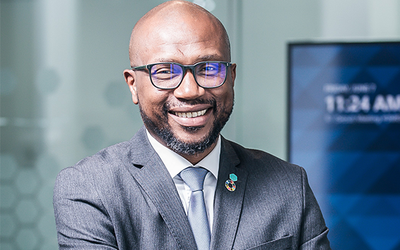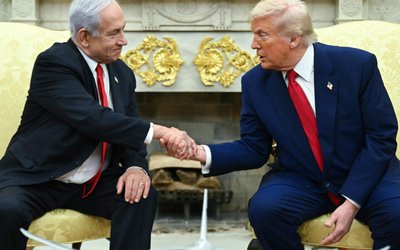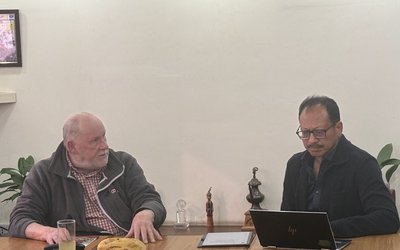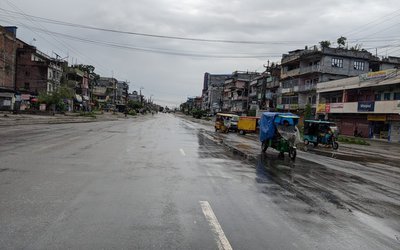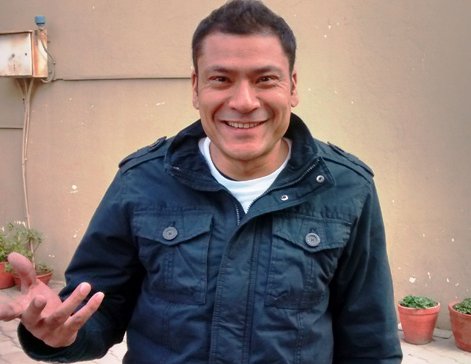
Nepal has launched the reconstruction campaignwith a call for more support from the international communities, NGOs/INGOs and private sector.In that context, UPENDRA MAN SHRESTHA, program officer of Practical Action, spoke to NEW SPOTLIGHT on issues related to the role of organizations like Practical Action in the efforts to build back better. Excerpts:
How do you see the role of Practical ActionNepal in the reconstruction?
Practical Action can work in various areas -- for instance, agriculture, resilience building under DRR, WASH and energy sector. On livelihood,Practical Action shall work to revive the livelihood badly ruined by the earthquake. Revival of livelihood includes agriculture inputs, production and rebuilding of agriculture related infrastructure and introduction of disaster resilientinfrastructure.We can also contribute in the off-farm areas. Our contribution will be in the areas of skill development of the local people. Similarly, we can help the people develop enterprise skills by linking the production to market.
What about the energy sector?
Earthquake has badly damaged theinfrastructure in the energy sector. For example, many micro-hydro projects have been badly affected by the earthquake. It will take time to reassess and rebuild the micro-hydro. We need to build back better in the process of rebuilding the infrastructure. Our focus should be to ensure no damage occurs even in case of a similar kind of disaster in the future. We should look intothe renewable energy sector, too.
How can Practical Action supportthe implementation of the building code?
Even as the government has announced new building designs and building codes, there is still some room to better manage them. Practical Action can provide technical expertise to make the new buildings energy efficient and smoke free. For instance, our traditional houses have indoor air pollution because of use of firewood. We can free housesfrom pollution by developing certain inbuilt capacity. We can add insulation in the building which will be constructed in cold areas.
What may be the other areas where your organization can contribute?
Practical Action can also contribute in the WASH, to see how WASH has been embedded in the prescribed design. How can new buildings and its surroundings be made better in terms of sanitation. Inside house and outside house, we can make better plans and management schemes.In rebuilding or building back better, Practical Action can support skill transfer and provide new skills as well as make the government’s prescribed new design easy for the local community to understand. We can provide the skill and knowledge required to translate the design in the field.
How can Practical Action support in improving design?
All the organizations have been working in this areafollowingthe building design and code prepared by the government. However, the design should be given to the house owners and masons. Petty contractors do not have the necessary knowledge. Here Practical Action can support in building knowledge centers in the context of building back better. We can also support dissemination of knowledge to the community.
What do you mean by knowledge?
Knowledge not only means building but it is also related to various issues of building. It includes capacity enhancement of the local authorities. For instance, the local authorities have the authority to approve and reject the building designs. However, it is the petty contractors and masons who materialize the buildings. Thus, owners, petty contractors and masons should have access to knowledge on the materials to be used in the house. The principle related to building back better and materials to be used to construct the buildingshould be disaster resilient. All should have this knowledge.
You have been working in Dhading and Gorkha districts, what have you have learnt?
So far as learning is concerned, Practical Action was heavily involved in temporary shelters in the early phase. Various organizationshave tested their technology in building the temporary shelters.However, we need to work further to know which technology is actually useful. There is the need to make a documentation for learning. We should at least know which design is the most appropriate in the caseof another disaster like this.
What is the experience of Practical Action in building temporary shelters?
We have constructed temporary shelters keeping in mind the short period of immediate difficulty. However, these will last for a longer period of time. The temporary shelters have already faced rain and cold. We should be able to tell which technology is appropriate in all these situations. We need to learn more.
How do you see the coordination part?
Coordination is one of the important issues. Different organizations have been working in their own ways but we need to learn how to make a better coordination. Certain programs have already been started to rebuild livelihood. However, there are still ways to make them more effective by improving coordination. Many of us are working on livelihood focusing on agriculture. There is also a provision of cash for work. If we follow this, it will increase the flow of cash. Once the cash is there, it generates the demands and demands affect the production. This will create a cycle.
How friendly and helpful are the local bodies and other local institutions at the district level?
District authorities have been making hard efforts to coordinate with different institutions. Our experience is very positive.
How about the working situation?
In some areas, there is competition among the development related organizations. Every institution is aspiring to work in more VDCs and more areas. However, many institutions are leaving the areas where there is the need due to lack of resources. Here the role of local authorities is important. The local bodies have to check the capacity of the organizations. They need to properly assess the capacity of various organizations.
As Practical Actions is known for transferring technology, have you implemented particular earthquake-resilient technologies in Nepal?
Our expertise is on disasters related to floods. We have a long experience of working in this area. We have also worked in earthquake related issues,such as, in Pokhara Municipality. Our work is related to multiple hazards, including floods and earthquakes. Following the earthquake, our focus was on retrofitting the buildings. We supported the municipalities in the area of introducingthe building codes.
What did Practical Action do in Pokhara?
We helped enhance the capacity of the municipality. Our work is taken as a good example in Pokhara. All the buildings are under new codes. We introducedthe building codes and held demonstrations of earthquake resilient technology in schools, hospitals, private houses and community buildings. This practice is now replicated in the area. All the new buildings which are under construction in Pokhara are following the building codes. The capability of the municipality has been enhanced. We worked in a system and cycle.
How about the training for mason?
Many have been talking about technical and knowledge aspects of masons. However, they are not the only actors. We help to build the capacity of inspectors of municipality, transferring the knowledge and skills, even those ofthe petty contractors. A whole cycle is involved and there is the need to involve all the actors. There is the need to translate this in the field.
Government agencies are complaining of many duplications in the programs implemented in the earthquake affected districts. How can Nepal reduce such duplications of work during the reconstruction?
So far as streamlining the programs is concerned, the process of streamlining has already begun. In many cases, forming a consortium has already started as like-minded organizations are coming together with different skills and competencies. All these organizations are now showing the seriousness to make a real difference in the field level. We need to work to prevent duplications. For instance, training for mason is popular among all the agencies, small and big. From small local based community organizations to big organizations like The World Bank and USAID, all are conducing training for mason. There is a lack of effort for synergy for such training and ideas for complementing and supplementing each other are wanting. If one organization is doing the training, another should come to develop synergy and complement, learning how to generate larger impacts from smaller resources. We need to work for value for money. If one organization is doing good work, the other should support it to make it better. Every organization has its weaknesses. If we can go through the consortium, we can better utilize the resources and technical expertise as well.
How do you assess the state of the program?
It is not that nothing has happened. A lot of work has already been done in the earthquake devastated areas. What is lacking is proper knowledge sharing. For instance, the government has recently announced the building design. However, proper dissemination ofthe design principles is lacking.
What is dissemination like?
Dissemination does not mean the publication of advertisement in one or another newspaper. What is required is to disseminate it properly to the people. There is the need to develop the knowledge materials on how to build houses. We need to disseminate the knowledge materials targeting owners, masons and local labors. Technical knowledge materials need to be developedby confining oneself to the current building designs. That is where we see a gap.
What other areas of confusions?
Another area is the confusion on what kinds of facilities and benefits the National Reconstruction Authority can provide to the people. For instance, where and when do the earthquake affected victims get the benefits provided by the government and authorities? Similarly, what does an earthquake victim need to do to acquire such benefits? What kinds of documents do they require and where are the contact points etc? Nobody really knows about them. In this scenario, it is very difficult to establish the access of people. There should be centers in certain places to provide that kind of information and knowledge. It should be within the government offices or community libraries or any other knowledge clubs to provide such information. This is what is lacking. At the field level, people are very confused about the situation and they don’t to know where to go and get this information.
- MELAMCHI WATER SUPPLY: No Interruption During Monsoon
- Jun 25, 2025
- KOREAN RETURNEES: Successful Integration
- Jun 25, 2025
- UPPER TRISHULI-1: Engaging With Local
- Jun 25, 2025
- IME GROUP: Twenty Five Years Of Journey
- Jun 24, 2025
- NEPAL’S AIR POLLUTION: A Growing Health Concern
- Jun 24, 2025


